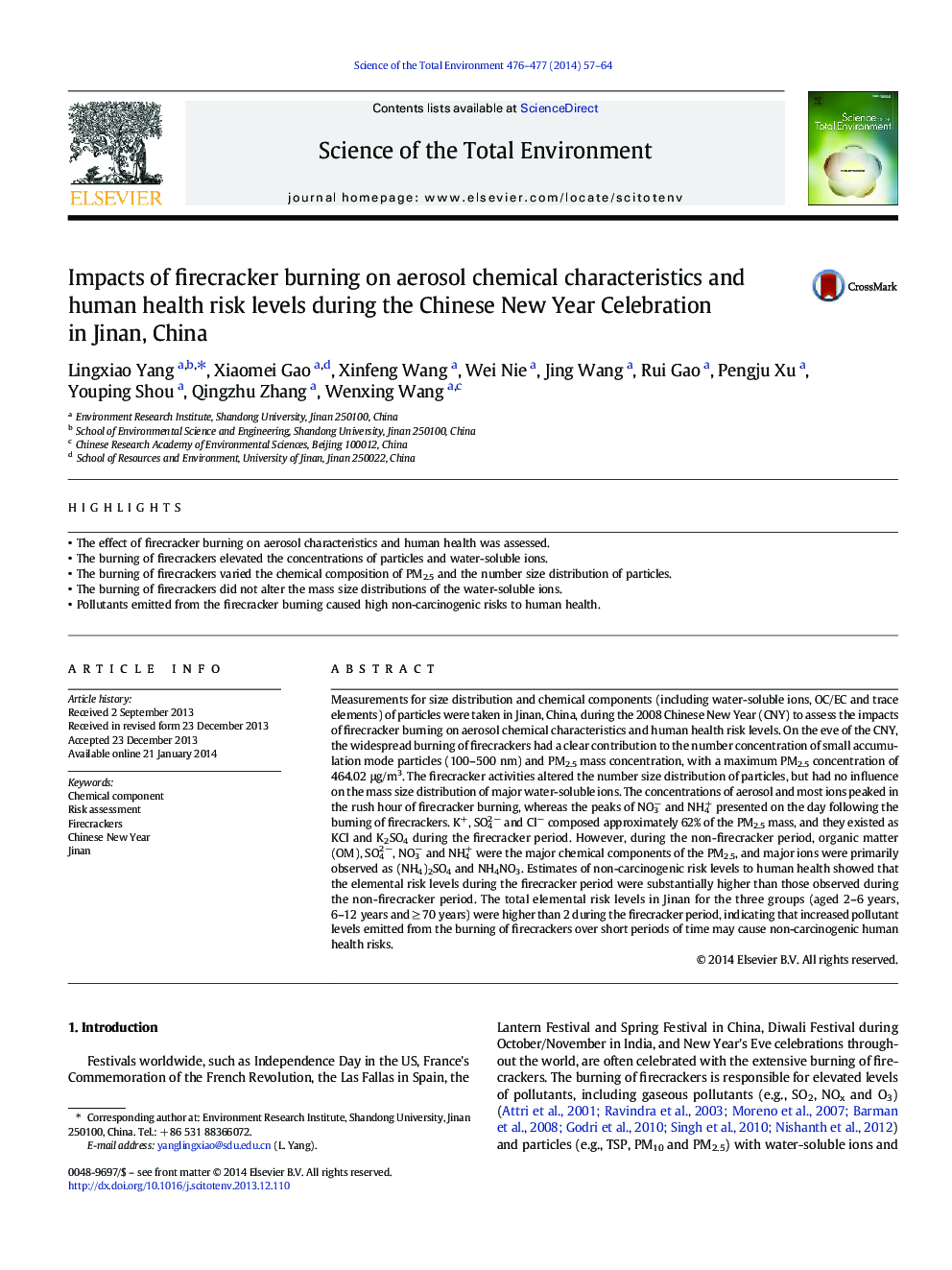| کد مقاله | کد نشریه | سال انتشار | مقاله انگلیسی | نسخه تمام متن |
|---|---|---|---|---|
| 4428521 | 1619789 | 2014 | 8 صفحه PDF | دانلود رایگان |
• The effect of firecracker burning on aerosol characteristics and human health was assessed.
• The burning of firecrackers elevated the concentrations of particles and water-soluble ions.
• The burning of firecrackers varied the chemical composition of PM2.5 and the number size distribution of particles.
• The burning of firecrackers did not alter the mass size distributions of the water-soluble ions.
• Pollutants emitted from the firecracker burning caused high non-carcinogenic risks to human health.
Measurements for size distribution and chemical components (including water-soluble ions, OC/EC and trace elements) of particles were taken in Jinan, China, during the 2008 Chinese New Year (CNY) to assess the impacts of firecracker burning on aerosol chemical characteristics and human health risk levels. On the eve of the CNY, the widespread burning of firecrackers had a clear contribution to the number concentration of small accumulation mode particles (100–500 nm) and PM2.5 mass concentration, with a maximum PM2.5 concentration of 464.02 μg/m3. The firecracker activities altered the number size distribution of particles, but had no influence on the mass size distribution of major water-soluble ions. The concentrations of aerosol and most ions peaked in the rush hour of firecracker burning, whereas the peaks of NO3− and NH4+ presented on the day following the burning of firecrackers. K+, SO42 − and Cl− composed approximately 62% of the PM2.5 mass, and they existed as KCl and K2SO4 during the firecracker period. However, during the non-firecracker period, organic matter (OM), SO42 −, NO3− and NH4+ were the major chemical components of the PM2.5, and major ions were primarily observed as (NH4)2SO4 and NH4NO3. Estimates of non-carcinogenic risk levels to human health showed that the elemental risk levels during the firecracker period were substantially higher than those observed during the non-firecracker period. The total elemental risk levels in Jinan for the three groups (aged 2–6 years, 6–12 years and ≥ 70 years) were higher than 2 during the firecracker period, indicating that increased pollutant levels emitted from the burning of firecrackers over short periods of time may cause non-carcinogenic human health risks.
Journal: Science of The Total Environment - Volumes 476–477, 1 April 2014, Pages 57–64
